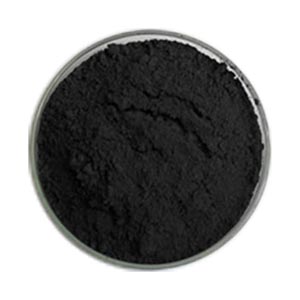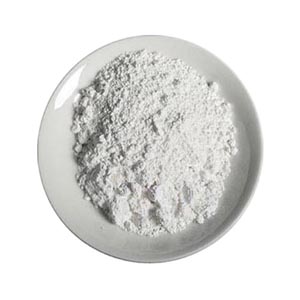
Nano tungsten carbide
Other name: Wolfram Carbide
CAS no. : 12070-12-1
CAS number 12070-12-1
Formula for the CW. CHCOW
The molecular weight of 195.85
EINECS no. 235-123-0
- 描述
- Inquiry
Average particle size: 200nm
Purity: 99.9%
Specific surface area: 60m2/g
Volume density: 3.8g/cm3
Crystal: hexagonal
We also can provide 80nm particle size, welcome contact us !
Feature:
1. The grain size reaches 0.20um, the particles are uniform, and the phenomenon of clamping coarse and agglomeration is significantly improved.
2. Particle dispersion is good. In the process of wet grinding, compared with nano-sized tungsten carbide produced by traditional process, the amount of grinding fluid should be appropriately reduced to obtain the best alloy performance.
3. The sintering performance of the alloy prepared by the alloy is significantly improved, and its low-temperature sintering performance is good. It is suggested that the sintering temperature of the alloy is about 1350 degrees.
4. Preparation of nano hard alloy, it is recommended to use ultra-fine particle inhibitors to obtain the best performance of the alloy
Tungsten carbide powder (WC) is the main raw material for the production of carbide, chemical WC. It is called Wolfram Carbide, also translated as tungsten Carbide, a black hexagonal crystal with metallic luster and similar hardness to diamond. It is a good conductor of electricity and heat. Tungsten carbide is insoluble in water, hydrochloric acid and sulfuric acid. Pure tungsten carbide is brittle, and when mixed with a small amount of titanium, cobalt and other metals, brittleness can be reduced. Tungsten carbide, used as a cutting tool for steel, is often added to titanium carbide, tantalum carbide, or a mixture thereof, to improve its resistance to explosion. Tungsten carbide is chemically stable
Melting point is 2870 ° C
The boiling point of 6000 ° C
15 tobacco on g/cm3 density
Theoretical density 15.55g/cm3
The microhardness is 17800MPa
Elastic modulus 71.0GPa
Compressive strength 56MP
Thermal expansion coefficient 3.84×10-6/℃
The resistivity 19.2 x 10-6 Ω · cm
Soluble in mixed acid and aqua regia of nitric acid and hydrofluoric acid, insoluble in cold water
Chemical properties
When the air temperature is above 500℃, it starts active oxidation and has weak antioxidant capacity. Tungsten carbide (WC) powder was synthesized by using tungsten anhydride (WO3) and graphite in reducing atmosphere at 1400 ~ 1600℃. Compact ceramic products can be obtained by hot pressing sintering or hot isostatic sintering.
use
1. It is widely used as high speed cutting tool, kiln structure material, jet engine parts, metal ceramic material, resistance heating element, etc.
2. Used for manufacturing cutting tools, wear-resistant parts, melting crucible of copper, cobalt, bismuth and other metals, wear-resistant semiconductor film.
3. Used as super hard cutting tool material and wear-resisting material. It can form a solid solution with many carbides. WC-TiC-Co carbide cutting tools have been widely used.
4. As the modification additive of nbc-c and TaC-C ternary system carbides, it can not only reduce sintering temperature, but also maintain excellent properties, so it can be used as aerospace materials.
相关产品
-
Niobium metaphosphate
English name: Niobium metaphosphate
Chemical formula: Nb (PO3) 5
Molecular weight: 487.90
Properties: sodium biphosphate glass, white powder, insoluble in water, PH value: 3.8
-
Tantalum diboride
Other name: tantalum boride (1:2)
CAS no. : 12007-35-1
EINECS no. : 234-234-5
Molecular formula: B2Ta.
Molecular weight: 202.572
-
Niobium boride
Other name : niobiumbago (NBB); boranylidyneniobium
CAS no. : 12653-77-9; 12045-19-1
EINECS no. : 234-958-8
Formula: B2Nb.
Molecular weight: 103.7174.
Density: 7g/cm3
Melting point: 3050℃
-
Niobium diselenide
Other name: Niobium(IV) selenide, Niobium selenide; Columbium selenide; diselenoxoniobium; niobium(+4) cation; selenium(-2) anion
CAS no. : 12034-77-4
EINECS no. : 234-811-8
Formula: NbSe2.
Molecular weight: 250.8264.
Density (g/mL,25) : 6.3
-
Tungsten silicide
Other name: Tungsten disilicide
CAS no. : 12039-88-2
EINECS no. : 234-909-0
Formula: Si2W.
Molecular weight: 240.011
Density: 9.40 g/cm3
Melting point: 2165 C.
-
Titanium carbonitride
English alias: TITANIUM CARBONITRIDE (7:3); TI (C/N) 30/70 a; TI (C/N) 30/70 b; TI (C/N) 30/70 C; TI (C/N) 50/50 a; TI (C/N) 50/50 b; TI (C/N) 50/50 C; Titanium carbon nitride; TiCN
CAS no. : 12654-86-3
Formula: TiCN
Molecular weight: 121.75
MDL: MFCD01868685
Density: 5.08 g/mL at 25 ℃ (lit.)
Melting point: > 350 ℃ (lit.)
-
Tantalum silicide
CAS no. : 12039-79-1
EINECS no. : 234-902-2
Molecular formula: H6Si2Ta.
Molecular weight: 243.16654
-
Tungsten hexachloride
English alias: Tungsten (VI) chloride; Tungstenchloride; Tungsten (6 +) hexachloride; Tungsten (4 +) tetrachloride; Tungsten chloride
CAS no. : 13283-01-7
EINECS no. : 236-293-9
Molecular formula: Cl6W
Molecular weight: 396.558
Melting point: 275 ℃
-
Vanadate zirconium
Molecular formula: ZrV2O7.
Molecular weight: 315.7.
CAS no. : 13981-20-9
Appearance: yellow powder
Used in functional ceramics, structural ceramics and other aspects as pigments.
Description: The use of temperature: 400-1080 ℃
The coefficient of linear expansion: – 10 x 10-6 ℃ – 1 -
Zirconium acetylacetonate
Other name: Zirconium-2,4-pentanedionate, Zirconium(IV)acetylacetonate; Tetrakis(acetylacetonato)zirconium(IV); 2,4-pentanedione,zrderiv.; acetyl-zirconiuacetonate; nasemuzirconium; orgatixzc150; pentane-2,4-dione-zirconium (4:1);
CAS no. : 17501-44-9
EINECS no. : 241-241-5
Molecular formula: C20H28 Zr O8
Molecular weight: 487.6555.
Melting point: 171-173℃













